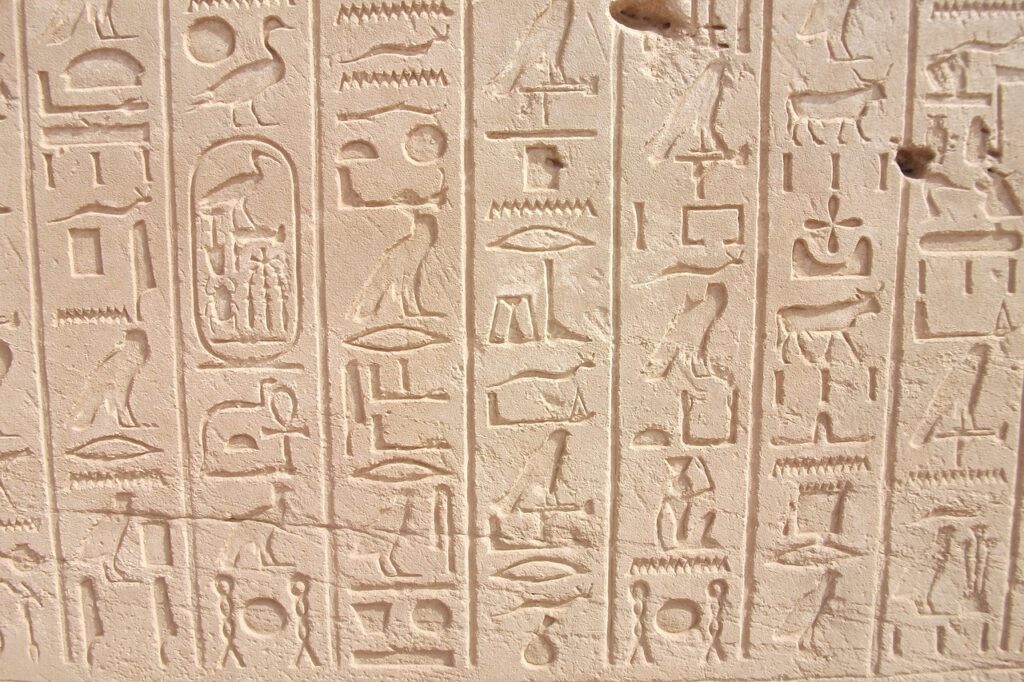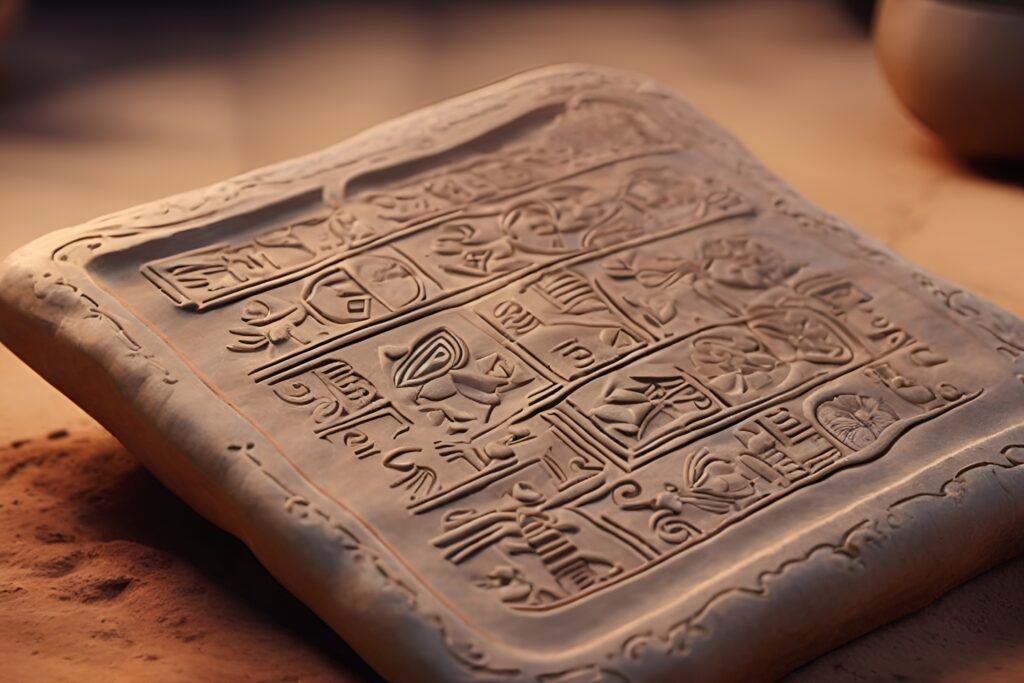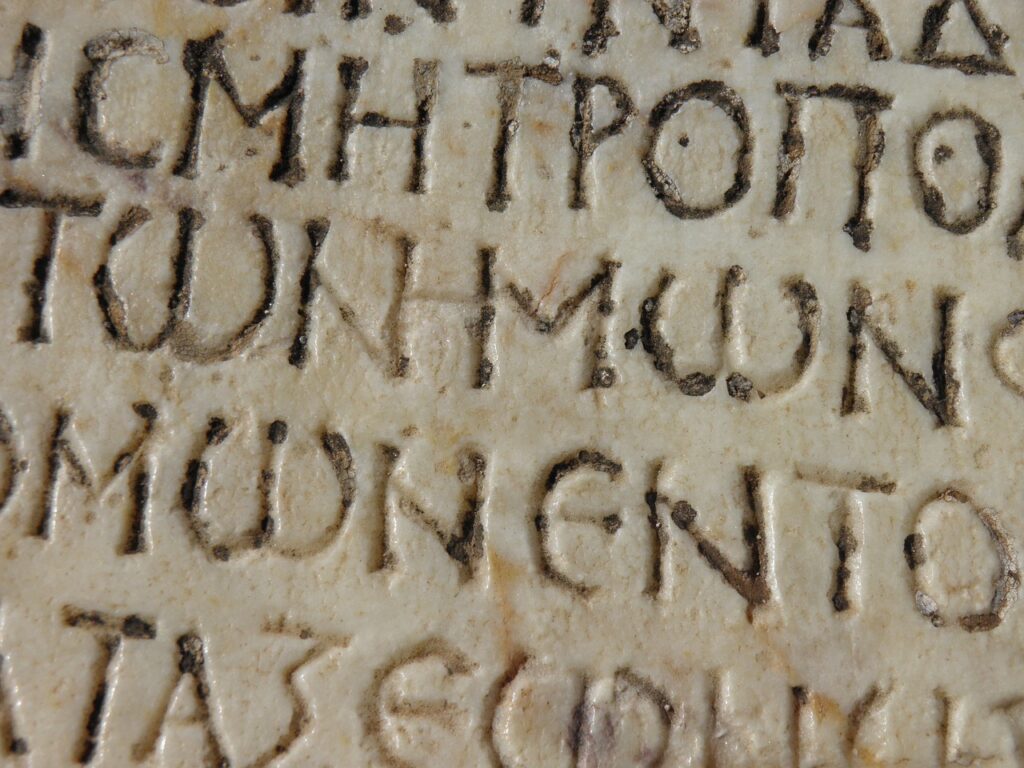Ever wonder who started the whole transcription thing? Forget Siri taking notes on your groceries. We’re talking ancient scribes, the original keyboard warriors. The practice of transcription, heralding back to antiquity, traces its roots to civilizations of yore. Scribes in ancient Rome were integral to the bureaucratic machinery, transcribing laws, decrees, and administrative records crucial for governance and legal proceedings. Picture stenographers in ancient Rome, documenting gladiator battles and toga parties on papyrus scrolls the size of your apartment.

In ancient Egypt, scribes were responsible for recording historical events, religious rituals, and administrative matters in hieroglyphic and hieratic scripts. These rockstar recorders were hammering out hieroglyphs in Egypt while your ancestors were still figuring out fire. Scribes in Mesopotamia, particularly in cities like Babylon and Assyria, played a pivotal role in maintaining vast libraries of cuneiform tablets containing legal codes, literature, and astronomical observations. They were filling clay tablets with legal codes drier than a day-old pizza.


In classical Greece, scribes were associated with transcribing philosophical dialogs, historical accounts, and dramatic works. Philosophers like Socrates and Plato probably annoyed the heck out of scribes with their endless lectures. Scribes in imperial China were central to the dissemination of Confucian texts, governmental edicts, and literary classics. Chinese emperors would leave voicemails (well, kinda) for scribes to dutifully record on silk scrolls

Among the Mayan, Aztec, and other Mesoamerican civilizations, scribes held sacred roles within religious institutions, recording calendrical information, mythologies, and historical events on codices and temple walls.
The Aztecs? Scribes there held sacred roles, recording info on massive codices and temple walls. They were the original graffiti artists, but with a penchant for calendars and mythology. The Mayans? They had scribes sketching out astronomical observations and recording cocoa bean rations – gotta keep track of that chocolate fix, yo!


Speaking of nerds, India’s had a whole scene going on too! From the early Vedic period to the flourishing Gupta Empire and beyond, scribes played an integral role in disseminating knowledge across the Indian subcontinent. These skilled scribes, often multilingual and highly educated, were revered for their meticulous work and dedication to preserving knowledge.
Learning centers such as Nalanda and Taxila served as hubs of learning, where scribes painstakingly copied scriptures, scientific treaties, and literary masterpieces. Basically, they were the photocopy gods of the Gupta Empire.
These OG knowledge keepers weren’t just copying stuff. They were the superheroes of civilization, saving history from the dustbin of time. They were the Ctrl+C and Ctrl+V of the ancient world, ensuring that future generations like us could geek out over cool hieroglyphs and dramatic Greek dialogs. So next time your AI assistant perfectly transcribes your grocery list, remember this. It’s just the latest chapter in a long, fascinating history of recording the world around us. From chiseling hieroglyphs to silk scrolls, these OG scribes were the real deal. Now, that’s some serious nerd cred!
Scribes vs. the Printing Press: Typewriter Slamdunk!

The printing press was like the ultimate troll for scribes, “buh-bye, job security!” Suddenly, copying text wasn’t a specialized skill, it was a party trick. But fear not, scribes adapted faster than you can say “hieroglyph.”
Enter Timothie Bright, a 16th-century British physician who basically invented modern shorthand. Think of it as keyboard shortcuts for pen and paper, perfect for a world that suddenly craved speedy scribblers. This innovation kept scribes relevant, transforming them into human stenography machines.
Fast forward to the typewriter era, and BAM! We’ve got typists and stenographers everywhere, especially women, who rocked the secretarial and transcription scene. Typewriters weren’t just about efficiency. Although that clickety-clack was super satisfying, they opened doors for women in the workforce, offering sweet independence and career opportunities. Then came the 80s, and the word processor arrived like a digital knight in shining armor. This wasn’t just about fancy fonts. It was the first hurrah for digital transcription!
Word processors made things way faster, but more importantly, they paved the way for the crazy tech world we live in today. Imagine a world without the ability to easily edit and revise documents, a world where every typo was permanent and white-out was your best friend. Thankfully, word processors ushered in a new era of digital creation, laying the foundation for the revolutionary tech that we obsess over.
Board Meetings: From Smoke-Filled Rooms to Global Video Calls

Board meetings: not exactly the first thing that gets your adrenaline pumping, right, AI aficionados? But hold on to your binary code, because these corporate huddles have a surprisingly nerdy history! Back in the day, before fancy offices and stock tickers, companies were run more like clubs with fancy hats.
Shareholders and directors would gather around a table, probably with a lot of cigar smoke, to chat about the company’s business. This was the OG board game meeting, minus the Monopoly rage.
Warp Speed Ahead: The 17th and 18th centuries, when stock markets exploded onto the scene like the Batmobile. Suddenly, companies had to be more transparent, so board meetings became super official. Regulatory bodies like the SEC showed up and said, “Hey, gotta report your finances regularly,” which wasn’t exactly a popularity contest with some companies. This transparency led to the birth of earnings calls, basically company report cards delivered to investors. They were like quarterly tests, but instead of cramming the night before, companies had fancy presentations and charts (cue the bar graphs!).
Telephones came along in the 20th century, and earnings calls went global. Companies could chat with investors worldwide, which meant no more waiting for pigeons to deliver messages. Although carrier pigeons would be pretty epic for a board meeting entrance, wouldn’t they? As the world got smaller thanks to globalization, board meetings and earnings calls had to adapt too. Here’s a scene: a bunch of CEOs using those little handheld translators to talk to international investors. Hilarious, right?
The digital revolution came in like a superhero and gave us video conferencing. Today, board meetings can be like virtual reality tours of company headquarters, except with less dizziness and more spreadsheets. Don’t just picture board meetings with suits and ties. This isn’t just about earnings conference calls and financial investment meetings. It’s a story filled with fancy hats, transparency battles, and the occasional technological leap.
From Pigeon Post to Pixel Perfect
How Earnings Calls Got Streamed (and Outsourced)!
Remember dial-up internet and waiting ages for a grainy image to load? That’s pretty much how earnings calls used to be: slow, clunky, and only accessible to a select few fancy folks with stock tickers on their walls. Thankfully, the internet revolution rolled in like a social media update and changed everything. Webcasts, live streams, and online financial portals became the new boardroom pigeons, delivering earnings calls to a global audience. Suddenly, anyone with an internet connection could be a virtual fly on the wall, listening to CEOs talk about profits (or losses, yikes!).
This transparency was a win for everyone, especially investors who could analyze company performance with the click of a button. This was the ultimate financial report card, delivered straight to your laptop. But with this digital revolution came a new challenge: all this spoken word goodness needed to be transformed into text. Enter the internet’s answer to hieroglyphics experts: transcription ninjas! The business world discovered the magic of outsourcing, and countries like India became hubs for these digital ninjas.
Slaying the TAT Hydra
Outmaneuvering Deadlines, Outsmarting Accuracy Gremlins!
These transcription offices were like digital war rooms, filled with skilled typists who could turn CEO jargon into crystal clear text. The process was intense. Consider this scenario: listening to hours of earnings calls, then meticulously converting every word into a written document. Accuracy was key, but speed was its arch-nemesis! Deadlines (DLs) and turnaround times (TATs) loomed large, the ever-present villains threatening to crush any transcription company who dared to falter.
But these data detectives were prepared. They wielded a powerful arsenal of multiple-stage checks: ‘Transcription’, ‘First draft’, ‘Final Edit’, ‘Quality Check’ and ‘Proofreading’ to ensure everything was perfect. These outsourcing hubs became the secret sauce of the financial world, delivering high-quality transcripts that were both fast and affordable. Now, thanks to the internet and these data ninjas, earnings calls are no longer a mystery wrapped in an enigma.
They’re accessible, transparent, and perfect for anyone who wants to geek out on the inner workings of the financial world. And hey, maybe someday AI will take over the transcription game entirely, freeing up humans for even more epic data wrangling tasks!
Speech-to-Text & Translation
Supercharging Business and Financial Transcription
The business and financial transcription industry thrives on accuracy and efficiency. However, traditional methods can be time-consuming and prone to human error. This is where speech-to-text and translation technologies come in, offering a powerful boost to the field. Speech-to-text software can transcribe audio recordings of earnings conference calls, board meetings and interviews with impressive accuracy. This eliminates the need for manual transcription, freeing up human transcribers for tasks requiring specialized knowledge or nuanced judgment.
AI handles the grunt work of capturing every word spoken during an earnings call, allowing human experts to focus on reviewing and refining transcripts, and identifying and eliminating errors. Furthermore, speech-to-text streamlines the transcription workflow. Editors can polish and refine transcripts at faster speeds while AI captures the text. This reduces turnaround times significantly, allowing businesses to access transcripts faster and make quicker decisions. The benefits extend beyond speed and accuracy.
Speech to text software can be integrated with existing workflows, automatically generating transcripts that can be easily shared and searched. This promotes collaboration and knowledge sharing within teams. Financial institutions can leverage speech to text for real-time captioning of conference calls, enabling deaf and hard-of-hearing participants to fully engage in discussions. This fosters inclusivity and ensures everyone has access to critical information.
Another exciting application is translation. Advanced translation tools can convert transcribed text into multiple languages in real time. This breaks down language barriers, allowing companies to tap into international markets and conduct multilingual meetings seamlessly. Imagine a multinational corporation using speech to text and translation to facilitate a board meeting with participants from various countries, all receiving information in their native language.
However, it’s important to acknowledge that accuracy can be affected by accents, background noise, and technical jargon. Human editing and refinement of transcripts remains crucial for quality control and ensuring the final transcripts are error free and capture the intended meaning. By enhancing accuracy, efficiency, and accessibility, speech to text empowers the business and financial transcription industry to operate more effectively in today’s globalized and fast-paced business environment. AI acts as a powerful partner and force multiplier for human transcribers.
Tunk.ai
Supercharge Your Workflow with AI-Powered Transcription
Tunk.ai isn’t just another AI transcription tool. It’s a disruptor for the business and financial world. This industry-leading AI boasts unmatched accuracy, eliminating the need for human transcribers and first-level editors. Say goodbye to lengthy turnaround times and say hello to crystal-clear transcripts generated in a flash.Here’s how Tunk.ai revolutionizes the business & financial transcription industry.
Unparalleled Accuracy: Forget second-guessing. Tunk.ai delivers the highest transcription accuracy in the industry, capturing every nuance with precision.
Boost Efficiency: Skip the need for transcription and first-level edits. Tunk.ai’s automated transcription eliminates manual work, freeing up human experts for higher-level review and refinement.
Swift Transcripts: No more waiting. Tunk.ai generates transcripts as you speak, keeping you on top of the conversation and maximizing productivity.
Break down Barriers: Multilingual translation features bridge the language gap, fostering global collaboration and ensuring everyone has access to critical information.
The Future and Challenges of Transcription: Crystal Ball Time!
So, we’ve journeyed from ancient scribes with chisel and papyrus to AI ninjas wielding the power of Tunk.ai. But what’s next for transcription?
Spoiler alert: The future is looking as bright as a perfectly formatted spreadsheet! AI assistants can not only transcribe meetings in real time, but also analyze sentiment, identify key points, and even generate automatic summaries. Basically, your own personal word-whiz sidekick, ready to take on the grunt work so you can focus on the big picture. Language barriers will be gone. Advanced translation tools will become so seamless, you won’t even realize someone’s speaking a different language.
Behold!: A multinational board meeting where everyone hears the conversation in their native tongue? Mind-blowing, right? As AI is constantly learning and evolving, transcription accuracy will become near-mythical. We’re talking deciphering mumbled conference calls in noisy cafes: a transcriber’s dream come true! Challenges still lurk, though.
Accents as thick as pea soup and complex technical jargon can still trip up even the most advanced AI. Human expertise will remain crucial for quality control and ensuring the transcripts capture the true meaning behind the words.

Food for Thought!

In the future, AI will become a grammar-wielding Gandalf, banishing transcription errors and typos forever, freeing us up for creative analysis and strategic decision-making. So, the next time you hit that record button, remember this. You’re not just capturing words. You’re planting a digital flag in the ever-evolving battlefield of human communication.
AI is your super-soldier, blasting through the noise of inaccuracy with pinpoint precision. Together, you’re winning the war against lost information and ensuring every word becomes a weapon in the arsenal of understanding.